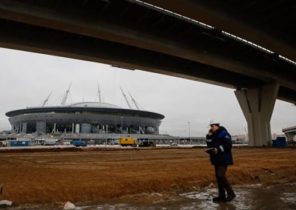Chicago — the Developed countries have spent huge sums on the provision antiastenicescoe help households and small and medium enterprises. In the June issue of “Prospects of the world economy,” International monetary Fund noted that taking account of the budgetary measures and credit guarantees total expenditure reached about 20 percentage points of GDP. In the United States Congress is considering the allocation of new costs — the amount varies from 5% of GDP (a version of the Republicans) to 15% (with Democrats). And by the time when the pandemic finally is over, it will take even more public spending and therefore borrowing.
Economists argue that in the current low interest rates, sovereign debt will remain stable at a much higher level than in the past. And they are right, if the growth rate of nominal GDP will return to reasonable levels, interest rates will remain low, and future governments will limit their spending. However, even if the first two conditions materialists, the third forces us to assess the quality of current spending.
In normal times responsible governments strive to balance in the course of the business cycle: during economic boom they repay that took during the recession, while the groups that benefit during the first phase, to carry out the payment at the second. However, there is not the slightest chance that the huge debts accumulated during the current crisis will be quickly repaid. Even after raising taxes on the rich (and this measure will face strong opposition and arguments against the policy of austerity that is strangling growth) a significant proportion of the accumulated debt will have to be passed on to future generations.
In the past such a debt to pay been easier. High economic growth rates meant that each generation is becoming richer, so the size of the former decreased debt relative to income. Today, however, factors such as the ageing of society, low level of public investment, sluggish productivity growth, do not allow our children to become much richer than we are.
We already are giving them a legacy of two enormous challenges: to look after us when our pensions will go unfunded, and solve the problem of climate change, against which we did almost nothing. Worse, we have restricted investments in health and education, and therefore a significant part of the new generation was not prepared to conduct a productive life.
The debt that we leaving the next generation, will further limit its ability to implement public investment that will have a negative impact on future earnings. But if we drain now has a total capacity of borrowing, then future generations will not be able to spend as much as you need when they are faced with another disaster happens “once in a century”, similar to the two disasters that we have experienced over the last 12 years. Intergenerational equity should be no less important than internal social justice for those who live today.
In practice, this means that the idea that everyone should pay compensation because the pandemic is “not their fault”, it becomes immediately untenable. Many countries pay compensation for uninsured homeowners who suffered from localized flooding or earthquake, and people in non-affected parts of the country willing to pay for it (in the form of higher taxes), because I know that I can count on the same attitude. However, when such a large shock, as the current pandemic, these calculations no longer work; the burden of payments inevitably must fall on the shoulders of future generations, which obviously are not responsible for the pandemic, nor for measures against it.
That is why we must distribute our costs very carefully. Since the pandemic (and its consequences) continues, we must switch to defense employees, not all available jobs. All laid off or sent on unpaid leave workers, of course, must be ensured a decent level of public assistance — until then, until you begin to recover, the overall level of employment. For a rich society to be morally right step to provide all social protection; and in the interest of all employees and their children were kept — or even expanded — their potential during a pandemic.
By doing this, the authorities must exercise more selectivity in respect of the companies for which they provide assistance, allowing the market to fulfill their job. For example, in residential areas, which in normal circumstances are thriving, a small business is constantly opened and closed. Bankruptcy is painful for the business owner, but the economy almost is no long lasting damage. If there is sufficient demand for flowers at the time of economic recovery, then a new flower shop could open at the old site. That is why the authorities uneconomical to keep the old flower shop, paying his rent, Bank loans, and salaries of employees in the indefinite future.
And just as the authorities do not have to offer grants or subsidized loans to struggling big businesses, such as airlines and hotel chains, in order that they could keep their employees. These companies will save an excessive number of workers only until then, until they cease to receive subsidies. Much cheaper to the government to assist the displaced workers in the framework of unemployment insurance than to pay the employer to indefinitely retain their jobs, although they were clearly not needed.
Large corporations who need money to stay afloat, you can engage them in the markets, it is viable thanks to the support of Central banks. If they are so overloaded with debts that no one gives them credit, then they can restructure their debts in bankruptcy and start all over again.
However, in some situations, firms may not be able to cope with market forces unaided. In economically disadvantaged areas, where several small enterprises, whose activity is difficult to start again, critical to the life of local communities, support is desirable both for economic and for social reasons. And while the markets normally perceive big companies to medium-sized companies finding funding can be difficult, even if they are quite effective. When economically viable, the firm, which employs 100 people, is closed, because more than a year she received no income, while engaged in her specialists are lost, the equipment is sold in liquidation, and best practices and norms that enabled it to exist, will be lost forever. And even if after her disappearance, there is a big economic hole, some startup will not take its place immediately and with ease.
However, in such cases, state support must not turn into a free lunch. Wherever possible, the government should ensure that available capital obtained from bondholders or shareholders, compensate fair share of losses before you start to provide state support and pass the burden on to future generations.
Finally, whenever possible, we should increase investment in youth as a partial compensation for the debts that we leave. For example, we have to spend money to secure the opening of public schools after the quarantine, and to ensure the availability of the necessary equipment from students for whom distance learning is the only option.
Public spending is needed today. But that is only because the sovereign debt markets has not yet reacted negatively to extremely high levels of borrowing and spending, we don’t have — for our children — to forget the necessary caution.
Raghuram Rajan, a former Governor of the Reserve Bank of India. Professor of Finance at the business school of the University of Chicago booth, author of the recently published book “the Third pillar: how markets and the government leave the community behind.”







